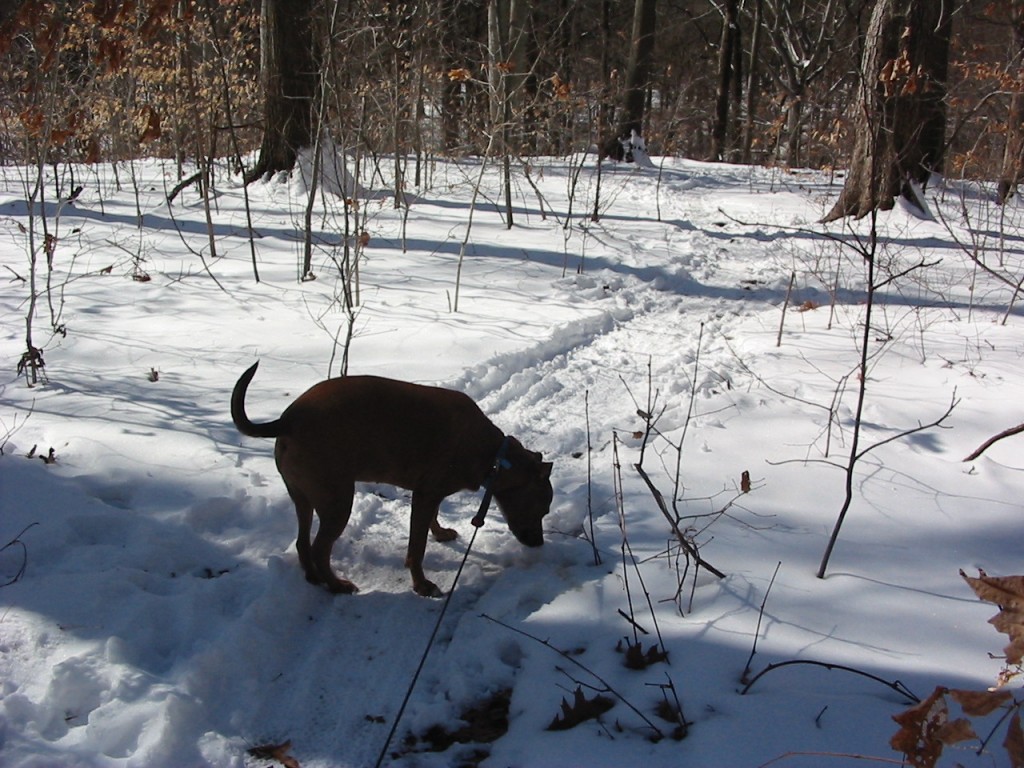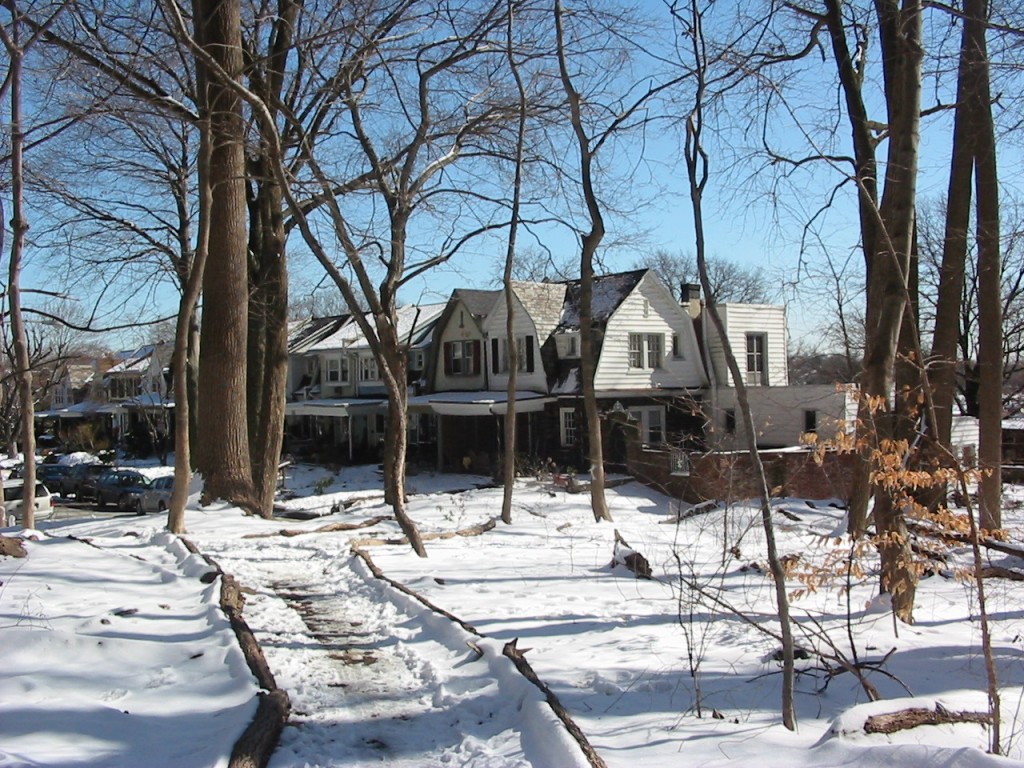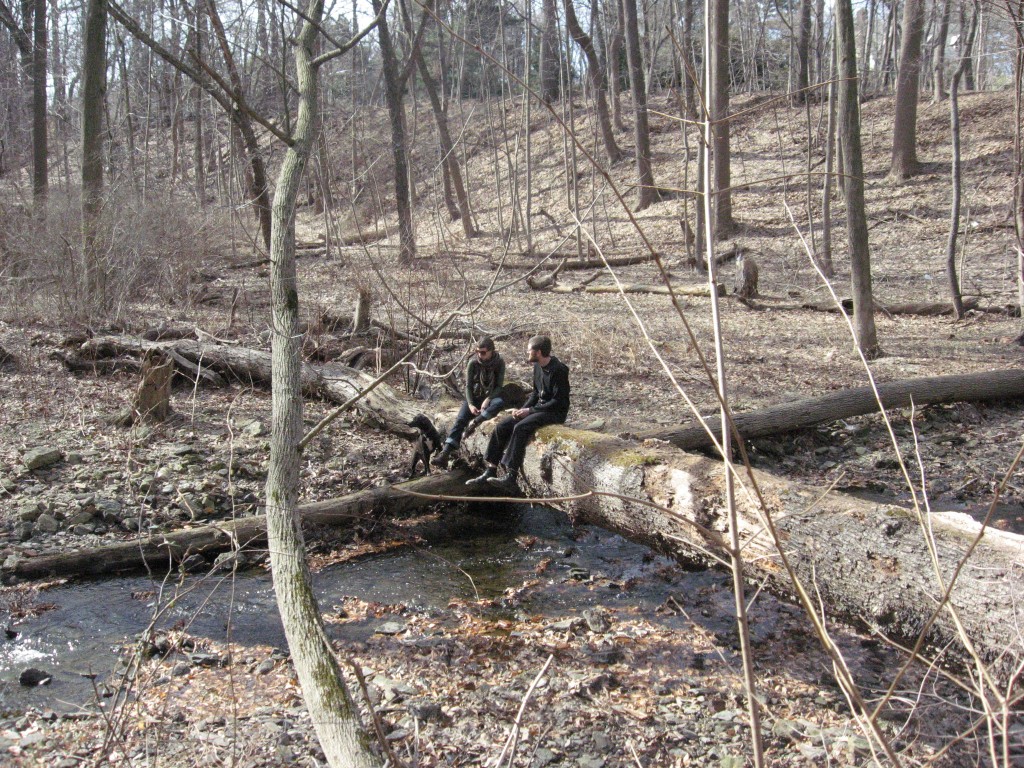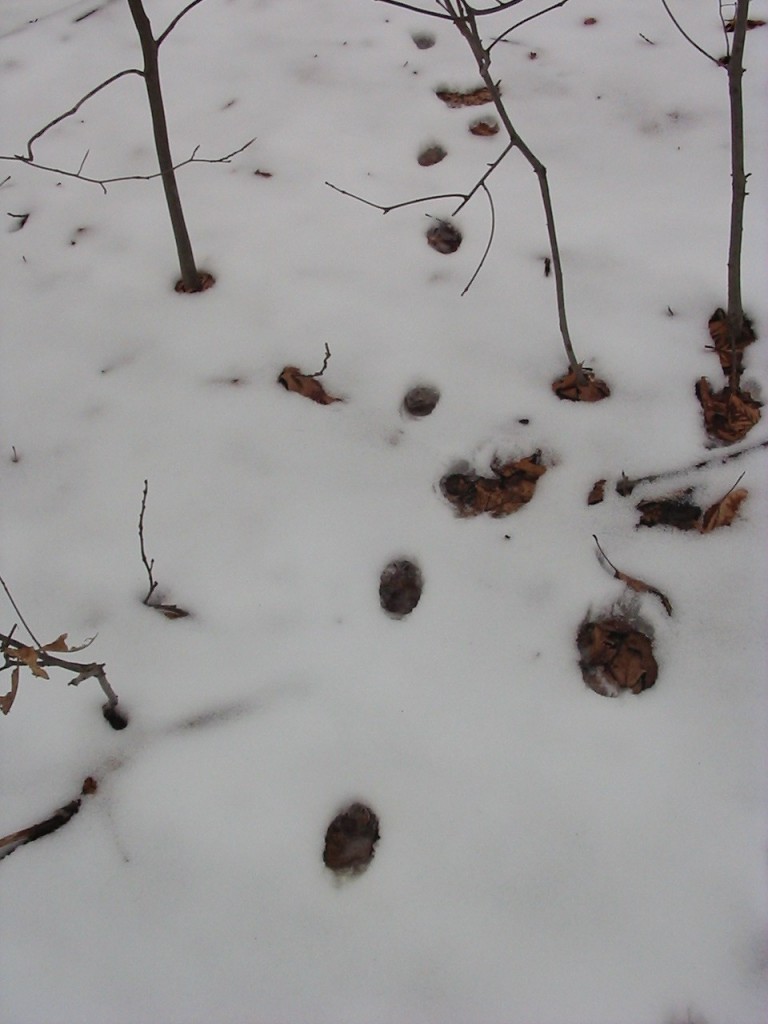PAWS AND SHOES, BOOTS AND SNEAKERS. BICYCLE WHEELS AND SLEDS ARE DETECTED ON THE MORRIS PARK ROAD TRAIL THIS MORNING.

Five inches of fresh powder in late February. This snow was like the old days in December 2010, a fluffy dusting, a reminder that winter still has its grip on our region. Before the snowcover is gone for the year, coming soon, there is a need for some mention of how great snow is for tracking.
Nothing is lost on a fresh coat of snow. Â The wanderings of deer and fox, human and dog are recorded exactly as they are on the frozen sheet of snow. Â If we would like to follow the passage of any of these creatures, this is the time. Â We can live the morning commute of a white-tailed deer, or of an energetic canine by following their footpath.
The snowcover will hopefully protect the soon-to-be emerging wildflowers from having their delicate buds being crushed by feet.
The log-bordered trail, in some sections, was designed to wind around  our populations of delicate and beautiful spring wildflowers, so they can be appreciated, photographed, drawn, inspected, meditated upon, admired and thoroughly enjoyed without being crushed accidently.
It is heart-warming to see so many tracks on the trail, that there is an enthusiastic usage in our community of this fantastic and inspiring natural area, right here in the City Of Philadelphia, one of the largest cities in the country. Â The diversity of native-to-Pennsylvania trees, shrubs and wildflowers in Morris Park is notable.
While the City Of Philadelphia has a distinguished and great personality in its people and its amazing architecture (especially our rowhomes, which are spectacular in architectural detail), our parks that represent and contribute to the diversity and richness of the flora and fauna of Pennsylvania are the most astounding quality of  our urban status.  Philadelphia is a city of homes and forested Parks.

Here, there is a heavily used Morris Park trail, with a neighborhood of fine row-homes in the background. Â This image robustly illustrates how a densely populated urban area can elegantly co-exist with it’s northeastern deciduous Pennsylvania piedmont forest location.
What is most uplifting is the amount of appreciation from the surrounding community there is for this arrangement. Â The sense of belonging, attachment, usage and responsibility is clearly evident in the tracks in the snowy trail.
Reports have been coming to the Sanguine Root from dog walkers who not only carry bags with them to pick up after their dogs in the park, but are also remembering to bring an extra bag, so they can pick up trash that may have been accidentally introduced into the park. (Sometimes trash will come out of our pockets when we reach into them to grab a bag to pick up after our dog).  We at the Sanguine Root have actually found trash that we accidently dropped from our own pockets a few hours earlier. Isabelle exclaimed just yesterday upon finding a receipt from Shop-Rite  on the trail: “Thats my garbage! I polluted!”
We also track some of the most unfortunate circumstances we face in the area: heroin users who leave behind empty bags and paraphernalia, sometimes in alarming frequency and with disturbing deposits, sometimes very close to our homes.
There are those that toss their empty beer cans into the forest along the trails. The Sanguine Root does our best to not let our blood boil. Â We pick them up, and move on. When we hear of other neighbors doing the same, we feel even better!
The Morris Park Road trail has become a place where the neighbors see each other and talk. it is an everyday experience. In the most heavily used sections there is hardly a bit of trash found, because someone in the neighborhood has picked it up.

When we go into the park, we want to experience the woods, and luckily enough for us here in Overbrook, the woods is right here.
The snow clearly shows how much the park is being used. Â All the foot traffic we see is inspirational.
For anyone who is able to get to an accessible natural area or park, we recommend  that you take a walk in your place if you can.
“Take a walk in the park” -one of the Sanguine Root’s mantras.
By the way, less than 30 days until spring, so enjoy all that winter has to offer!




I just looked at your mapping project. What a massive chore you have taken on! Yikes! There is almost a scary correspondence between holes in the forest and the location of your markers on the satellite image..just in parts. Must be a coincidence.
The bi and tri-pinnately compound leaves of Aralia elata create a dense shade below which few young trees can flourish. So where the Aralia grows will create holes in the canopy in the future. However, these populations are emerging and are fairly young. I suspect that they establish themselves in areas where the canopy was already compromised, possibly by other invasives and human disturbance.